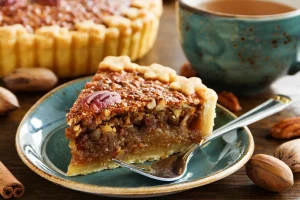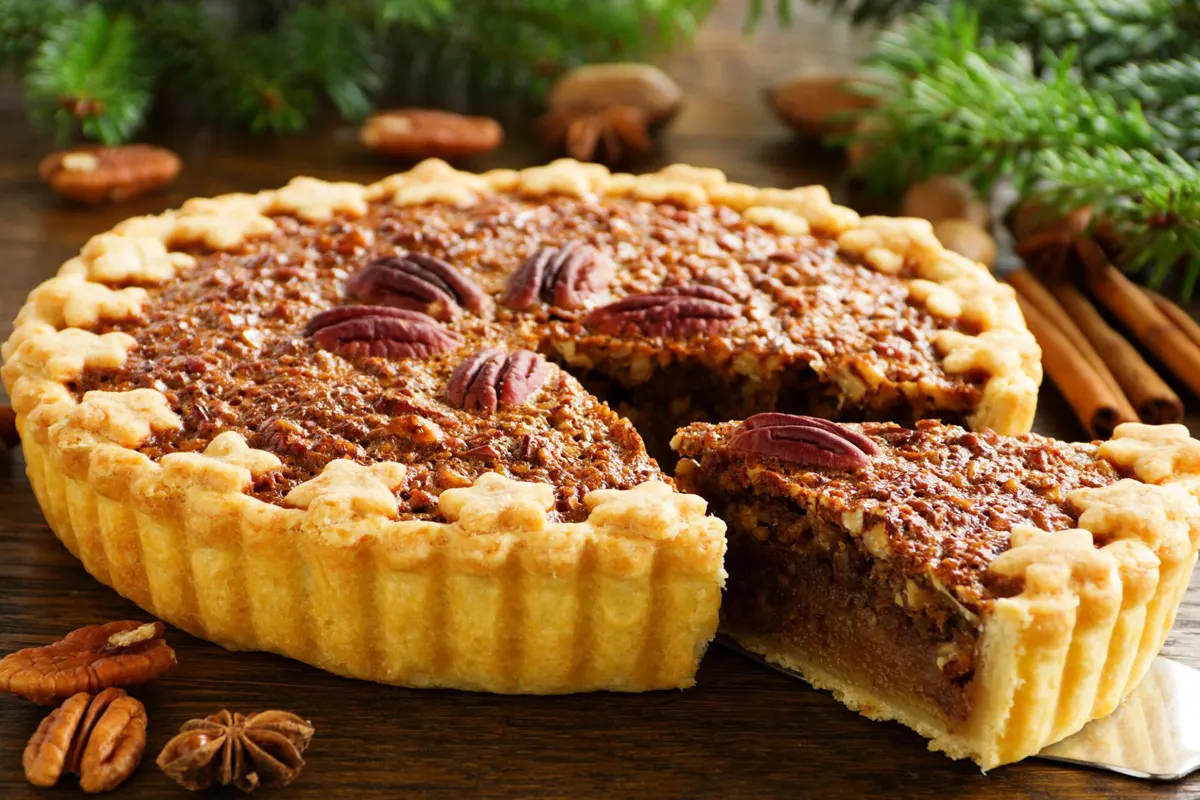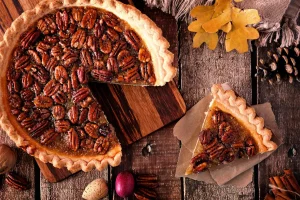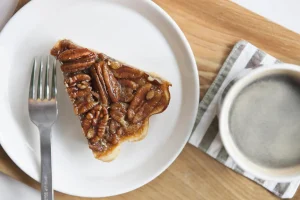Diving into the sweet and nutty world of pecan pie, this article unfolds the layers of this beloved dessert, exploring its rich history, quintessential recipes, and the various spins you can put on the classic to suit different dietary needs and preferences. From its southern roots to the dining tables around the world, pecan pie has carved its niche in the world of desserts, celebrated for its gooey filling, crunchy pecans, and flaky crust. Whether you’re a baking aficionado or simply a dessert enthusiast, this guide promises to enhance your appreciation and knowledge of pecan pie, ensuring that your next slice is not just a treat but an experience.
Introduction to Pecan Pie
History and Origins
The journey of pecan pie began in the southern United States, a region that prides itself on its rich culinary heritage. Though the exact origins are shrouded in mystery, it’s widely believed that French settlers, upon arriving in New Orleans, were introduced to pecans by Native Americans. They whipped up the first pecan pies, infusing their European pastry techniques with the local bounty. This delightful fusion gave birth to a dessert that would become a staple in Southern cuisine and eventually, an American icon especially revered during Thanksgiving and Christmas seasons.
Popularity and Cultural Significance
Pecan pie has transcended its regional origins to gain nationwide, and even international acclaim. What started as a simple recipe in home kitchens has now found its place in the hearts of dessert lovers across the globe. The pie’s ubiquity in American culture is such that it has sparked competitions, inspired variations, and even garnered a spot in literary works. Its significance is not just confined to taste; it embodies the spirit of American tradition, family gatherings, and festive celebrations.
One might wonder, “What is pecan pie filling made of?” At its core, the filling is a harmonious blend of eggs, butter, and sugar, often enriched with golden syrup or molasses to achieve that signature gooey texture. The pecans, generously scattered on top or mixed into the filling, add a crunchy contrast that elevates the pie to its revered status.
For more on the nutritional aspects and benefits of pecans, the National Pecan Shellers Association offers a wealth of information that underscores not just the taste but the healthful reasons to indulge in this delectable dessert.
As we delve deeper into the subsequent sections, we’ll uncover the secrets to crafting the perfect pecan pie, explore its variations, and answer all the questions you might have about this exquisite dessert. Stay tuned as we embark on this sweet journey, slice by slice, into the world of pecan pie.

The Art of Making Pecan Pie
Ingredients and Variations
At its core, the pecan pie thrives on simplicity. The traditional recipe calls for a short list of ingredients: pecans, eggs, butter, sugar, and a dash of vanilla extract, all cradled in a flaky pie crust. However, the beauty of pecan pie lies in its versatility. Modern variations have introduced delightful twists to the classic, such as the addition of chocolate chips for a chocolate pecan pie or a swirl of caramel for an extra layer of decadence. For those seeking a healthier or dietary-friendly option, alternatives like maple syrup can replace corn syrup, and gluten-free crusts can accommodate those with dietary restrictions.
Step-by-Step Baking Guide
The journey to a perfect pecan pie begins with the crust. A flaky, buttery base sets the stage for the rich filling to come. For many, the idea of making pie crust from scratch can be daunting, but with a little patience and practice, it becomes a simple foundation for your pie.
- Preparation Tips: Start by chilling your pie dough before rolling it out—this helps prevent shrinking during baking. Blind baking the crust, or partially baking it before adding the filling, ensures it stays crisp beneath the wet filling.
- Baking Instructions: Mixing the filling is as straightforward as whisking together the eggs, melted butter, sugar, and syrup until smooth. Stir in the pecans, pour the mixture into your prepared crust, and bake until the filling sets with a slight jiggle in the center. The key is to avoid overbaking, as the filling will continue to set as it cools.
- Common Mistakes and How to Avoid Them: One of the pitfalls in pecan pie baking is a filling that never sets or, conversely, becomes overly firm. Achieving the perfect consistency often comes down to precise timing and temperature control. Keep an eye on your pie and cover the edges with foil if they brown too quickly.
As we wrap up this segment on crafting the ideal pecan pie, remember that baking is as much about the love and care you put into it as it is about following the recipe. Each variation, each adaptation, brings a piece of your story to this classic dessert, making it uniquely yours. Stay tuned for our next installment, where we’ll delve into the nutritional aspects and dietary adaptations of the pecan pie, ensuring everyone can enjoy this delightful treat regardless of dietary restrictions.



